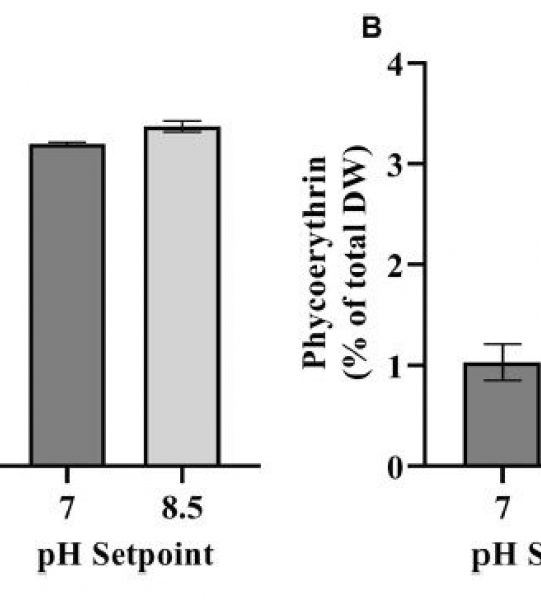General How does pH affect Rhdomonas salina taste, growth and composition?

Researchers at HZ University recently showed that R. salina is rich in umami flavor, according to the estimated equivalent umami concentration (EUC), which is affected by pH and salinity changes.
Since both production cost and scale, and flavour, odour and structure are still big bottlenecks in the acceptance of algae food applications for the European consumer, as the next step, this study aimed to demonstrate the semi-large scale production of R. salina under sunlight conditions and to investigate the effect of pH on biomass productivity, biochemical composition, and taste.



Conclusion of the study
In this study, R. salina was successfully cultivated on semi large scale (200 L) at two different pH setpoints, under natural sunlight conditions. The productivity was in general agreement with previous research at the pilot laboratory scale. The results show that the increase of pH from 7 to 8.5 has a significant effect on the productivity and the quality of R. salina. The productivity was higher at pH 7 than at pH 8.5. However, there is still potential for improvement of the (semi-) large scale production after considering the higher productivity values obtained at the laboratory scale and indoor conditions. The increase of pH to 8.5 induced the accumulation of lipids and phycoerythrin as a response to the pH stress. The change in the quality of R. salina due to pH settings affected the taste of the biomass, characterized by a higher umami taste at pH 7 and a higher bitter taste at pH 8.5. Our study provides the framework for future studies to assess the connection of the biomass composition of microalgae with their taste.

Another aspect of the study was to observe how the quality of R. salina can be manipulated. In many cases, contradictory conditions are required for the production of biomass and synthesis of target metabolites. The cultivation of microalgae in two distinct stages can offer a solution to this problem. In the first step, optimal growth conditions are provided to achieve high biomass productivities. This step is followed by the second stage, where cells are exposed to stress conditions in order to accumulate target metabolites.
